The versions of the Hannover CL.IIIa featured in WW1 Wings of Glory Airplane Packs include fighters used by brave pilots such as Johan “Hans” Baur, better know for his role after the First World War as the personal pilot of Hitler, or Rudolf Hager, a possible "victim" of the famous Eddie Rickenbacker. Following the article about the Hannover CL.IIIa, let’s learn more about these pilots.
Johan “Hans” Baur
Johan “Hans” Baur was born in Ampfing, Bavaria and educated at the Erasmus-Grasser-Gymnasium in Sendling-Westpark, Munich. Baur was called up to the Imperial German Army in 1915, and trained in field artillery at the airfield in Augsburg. He served in the Bavarian FA (A) 295 pilot double machine, where his observer was Lieutenant George Von Hengl.
Flying the Hannover CL.IIIa, Baur and Hengl performed about 160 reconnaissance missions, during which they six French aircraft. As vice-sergeant, Johann Baur received the Iron Cross 1st Class on July 17, 1918, and Bavarian silver medal "For Courage" after the fight against the 7 "recession." In this battle the German crew shot down two Spad and 2 more were forced to land. In total, they scored 6 official victories and 3 unconfirmed, with 3 enemy planes shot down by them in a single battle on October 29.
Under the terms of the Treaty of Versailles, Germany had to disband its air force. Baur joined the Freikorps under Franz von Epp, and in the same year became a courier flier for military airmail in Fürth. From 1921 to 1923 he was a pilot for Bayrische Luftlloyd, and then Junkers Luftverkehr. In May 1923, Baur flew the opening flight of the Munich-Vienna route in a Junkers F 13. In 1926, he became one of the first six pilots of Deutsche Luft Hansa.
Also in 1926, Baur became a member of the NSDAP (Nazi Party No. 48,113). On 1 April 1931 Baur flew the opening flight of the Berlin-Munich-Rome route, known as the Alpine flight, whose passengers included Nuntius Eugenio Pacelli, Arturo Toscanini and Tsar Boris III of Bulgaria. Hitler was the first politician to campaign by air travel, deciding travel by plane was more efficient than travel by railway. Baur first piloted him during the 1932 General Election.
Hitler obtained his first private aeroplane, a Junkers Ju 52/3m with registration number D-2600 (Werk Nr. 4021), in February 1933, on becoming German Chancellor. Powered by BMW 132 licence-built Pratt and Whitney radial engines, it was named Immelmann II after the First World War pilot Max Immelmann. Baur had just became an "air millionaire" of Luft Hansa, having flown his millionth kilometer for the airline. As a result of his combination of experience and capability to restart a plane engine in combat, which Hitler took as a sign of fate, Baur was personally selected by Hitler to be his official pilot in February 1933.
Baur was appointed head of the Hitler's personal squadron, initially based at Oberwiesenfeld, Munich. As the Luftwaffe was not yet established, Hitler wanted Baur to be able to command sufficient power and respect to assure his security, and therefore commissioned Baur a Standartenführer (Colonel) in the Schutzstaffel (SS No. 171,865).
Upon his arrival in Berlin in 1933, Baur's first task was to expand Hitler's squadron and implement new security procedures. In 1934, after the death of von Hindenburg, Hitler reorganized the government and created the Regierungsstaffel (Government squadron), making Baur the head. Headquartered at Berlin-Tempelhof Airport, Baur was charged with providing flights and pilots for the Führer's cabinet and for his generals. There were eight planes able to carry 17 passengers each at his disposal. D-2600 remained Adolf Hitler's primary aircraft.
After Hitler became Führer, he increasingly relied on Baur for advice about air war policy and technical developments. He allowed Baur to fill his squadron with experienced Luft Hansa pilots, and train them in military procedures in preparation for the forthcoming war: Kurt Schuhmann – personal pilot of Deputy Führer Rudolf Hess; Max von Mueller – personal pilot of Reichs Propaganda Minister Dr. Joseph Goebbels; Peter Strasser – personal pilot for Admiral Erich Raeder; Graf Schilly – personal pilot for the Chief of Staff General Werner Frengel and General Walther von Brauchitsch; Georg Betz – co-pilot for Hitler's aircraft and Hans Baur's substitute.
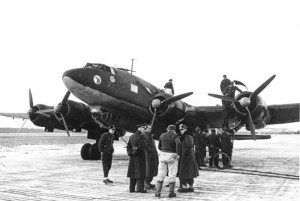
The Fw 200 Condor, the Adolf Hitler's personal aircraft, with the insignia of the Fliegerstaffel des Führers on its nose.
In September 1939, the squadron was renamed Die Fliegerstaffel des Führers. Hitler's personal squadron now had a special insignia painted on the nose of all planes: a black eagle head on a white background, surrounded by a narrow red ring. On 31 January 1944, Baur was promoted to SS-Brigadeführer (brigadier general) and major general of the police; and on 24 February 1945 became an SS-Gruppenführer (major general) and Generalleutnant of the Police.
During the last days of the war, Baur was with Hitler in the Führerbunker. Baur had devised a plan to allow Hitler to escape from the Battle of Berlin; a Fieseler Fi 156 Storch was held on standby which could take off from an improvised airstrip in the Tiergarten, near the Brandenburg Gate. However, Hitler refused to leave Berlin. On 26 April 1945, the improvised landing strip was used by Hanna Reitsch to fly in Colonel-General Robert Ritter von Greim, appointed by Hitler as head of the Luftwaffe after Hermann Göring's dismissal. During the evening of 28 April, Reitsch flew von Greim out on the same road-strip. Hitler suggested to Baur he evacuate himself and Martin Bormann the same way.
Baur stayed with him until Hitler committed suicide on the afternoon of 30 April. After Hitler's suicide, Baur and Bormann left the Reich Chancellery as part of one of the groups. During his escape, after losing touch with Bormann, Baur was shot in both legs, and the wound was so serious that his right lower leg was later amputated in Posen on 10 June 1945.
Captured by the Soviets in a hospital, Baur was of great interest to his captors, who believed he might have flown Hitler to safety before the fall of Berlin. They also believed he had information concerning stolen art. They especially wanted information concerning the plundering of the Amber Room, (Bernsteinzimmer), in Leningrad. He underwent ten years of imprisonment in the USSR before being released on 10 October 1955 to the French, by whom he was kept prisoner until 1957.
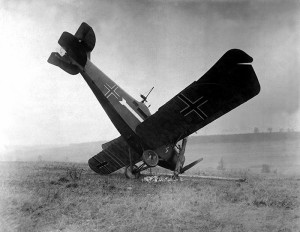
The German plane C.L. III A 3892/18, brought downby American machine gunners in October 4th (source: U.S. National Archives and Records Administration).
Baur returned to West Germany and in 1957 wrote his autobiography Ich flog mit Mächtigen, which liberally translates as "I flew with [the] mighty." The book was later lengthened and the title was changed to Mit Mächtigen zwischen Himmel und Erde, which translates as "Between Heaven and Earth with [the] Mighty." The book contains a collection of eyewitness accounts of Hitler's daily activities and conversations and is unique because Hans Baur, as his private pilot and personal friend, was in Hitler's presence practically every day from 1933 to 1945. Baur died in Herrsching, Bavaria, of old age ailments in 1993. For a time, his house in Herrsching served as a pilgrimage for many veterans of the war.
Rudolf Hager
There is little information on the crew of the Hannover CL.IIIa piloted by Rudolf Hager, with Uffz. Otto Weber as gunner. For a long time it was believed their airplane, the 3892/18, had been shot down by Eddie Rickenbacker on October 2, 1918, a victory shared with Reed Chambers, but this version was not confirmed.
On Oct 2nd, 1918, Captain Rickenbacker, of the 94th Aero Squadron, was flying a Spad XIII with Lt Reed Chambers over the Montfaucon area of France, when they encountered a Hannover CL.IIIa two-seated reconnaissance airplane, credited as the Hager/Weber aircraft. But this information was not confirmed and the C.L.IIIa 3892/18 was credited as "brought down in the Argonne by American machine gunners, between Montfaucon and Cierges", on October 1oth, 1918.
Information sources: The Aerodrome, World War Two Graves, Wikipedia, Rosebud's Early Aeroplanes and Airships, San Diego Air and Space Museum, Air Aces КРАСНЫЕ СОКОЛЫ.

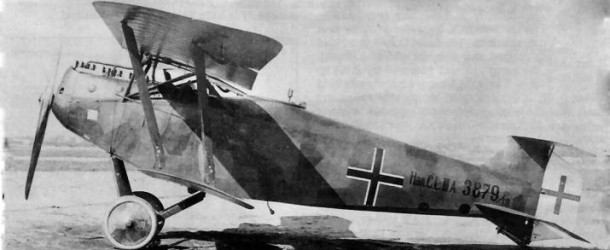
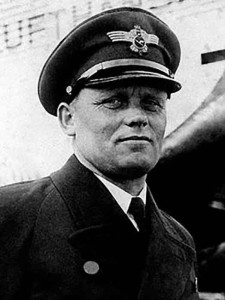
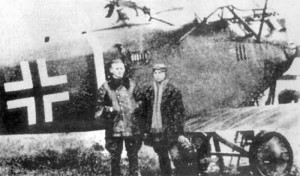
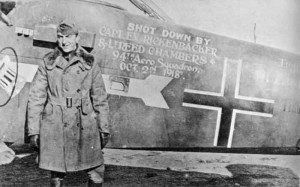






Follow Us on